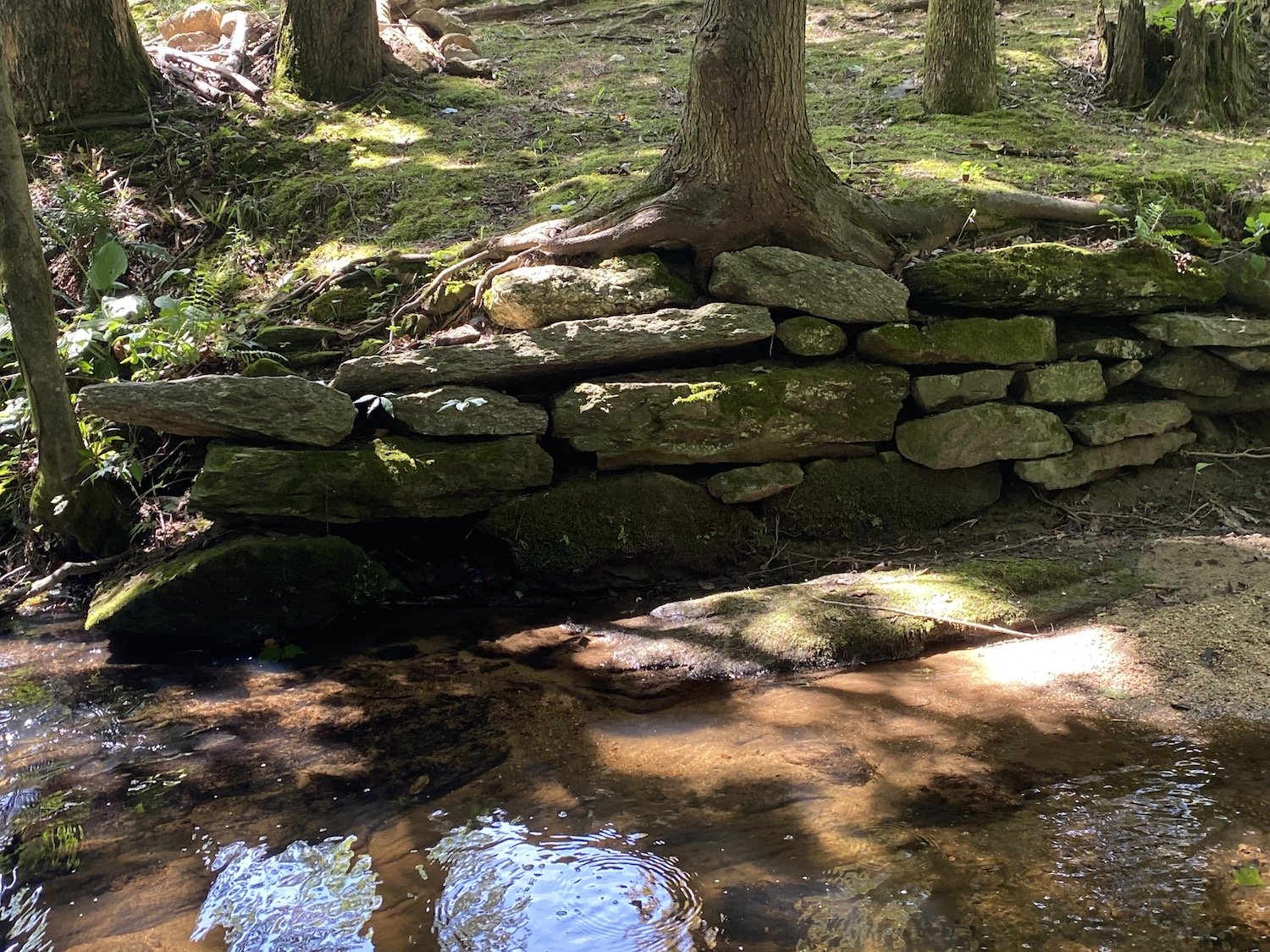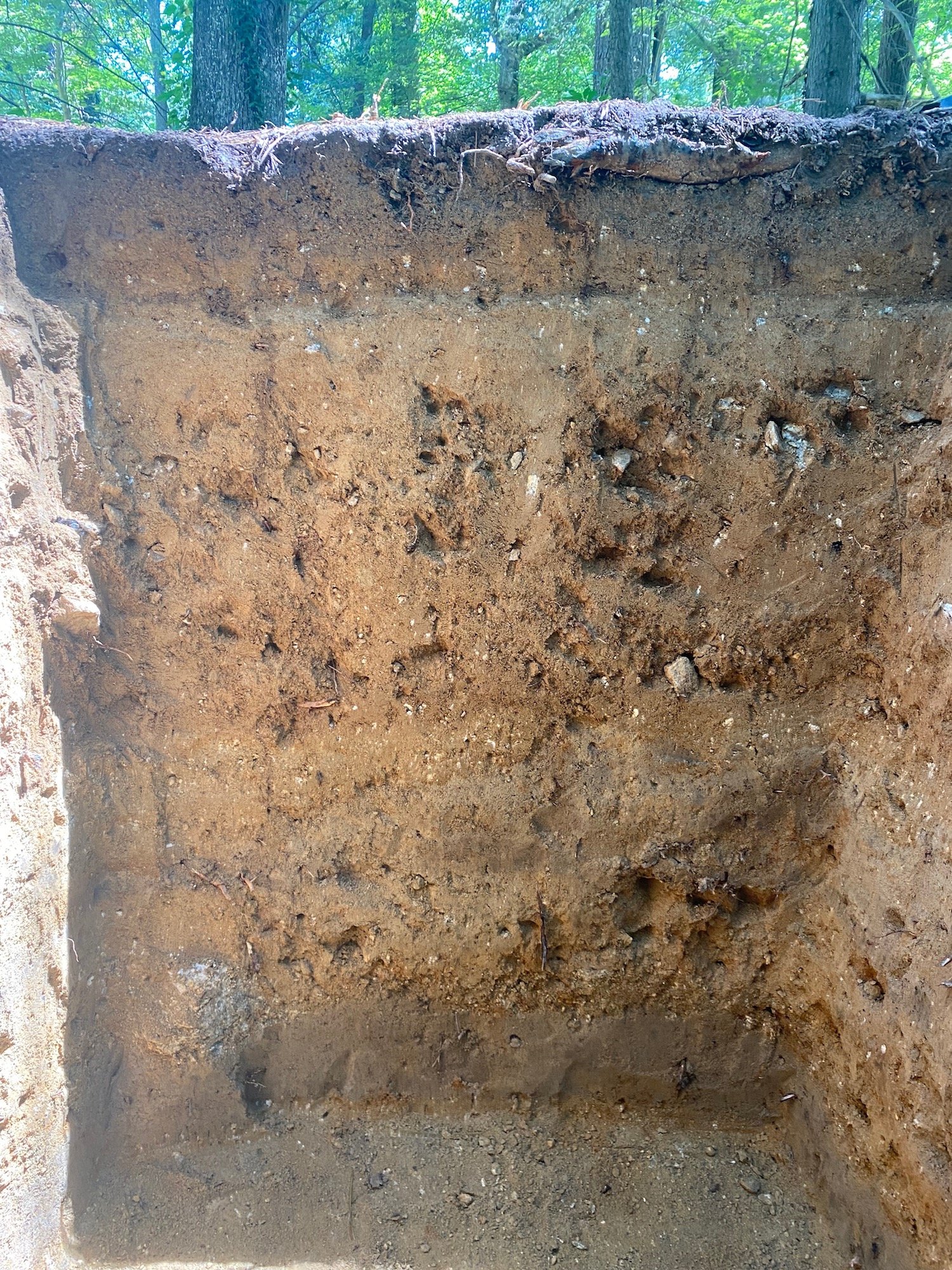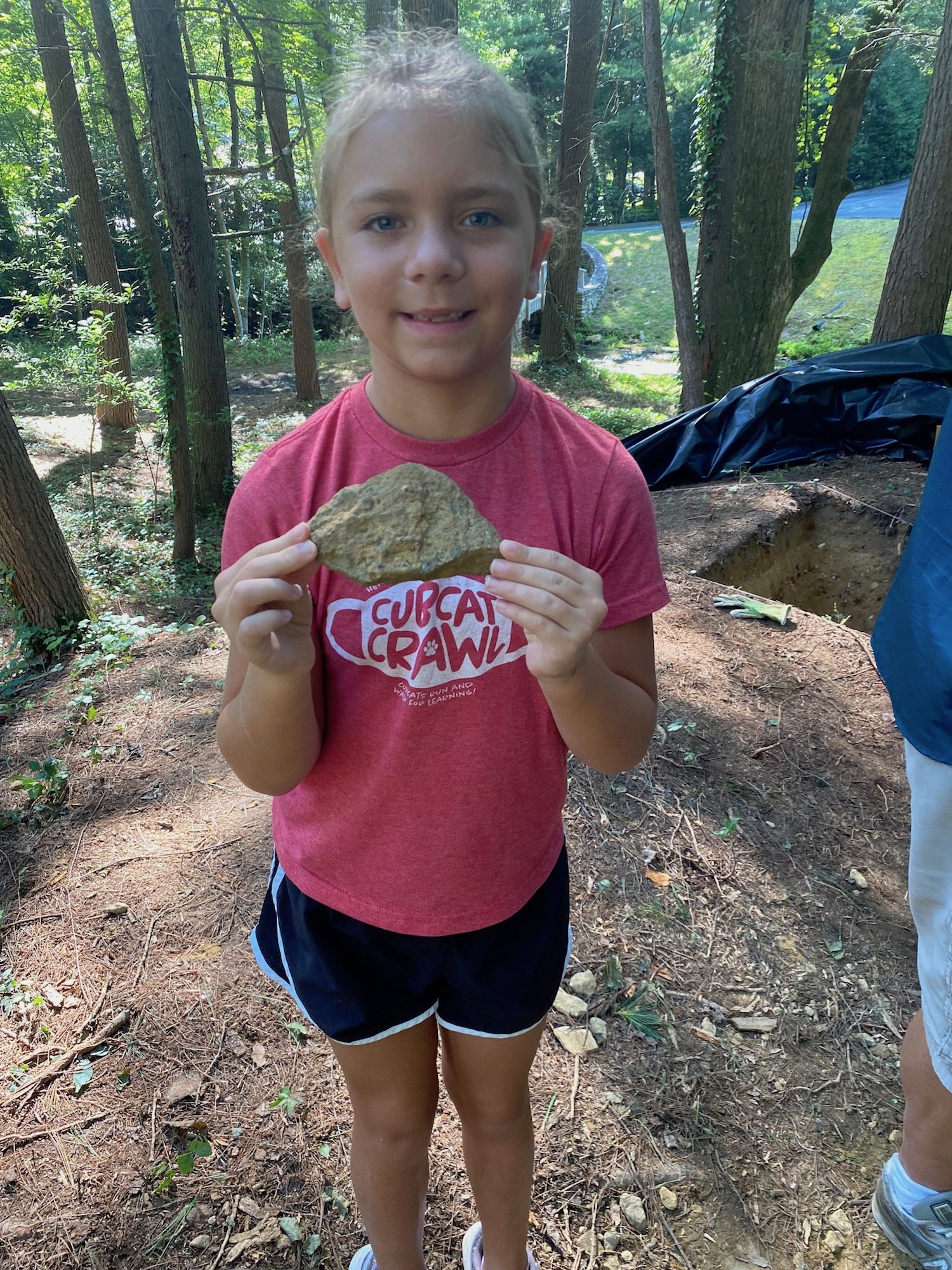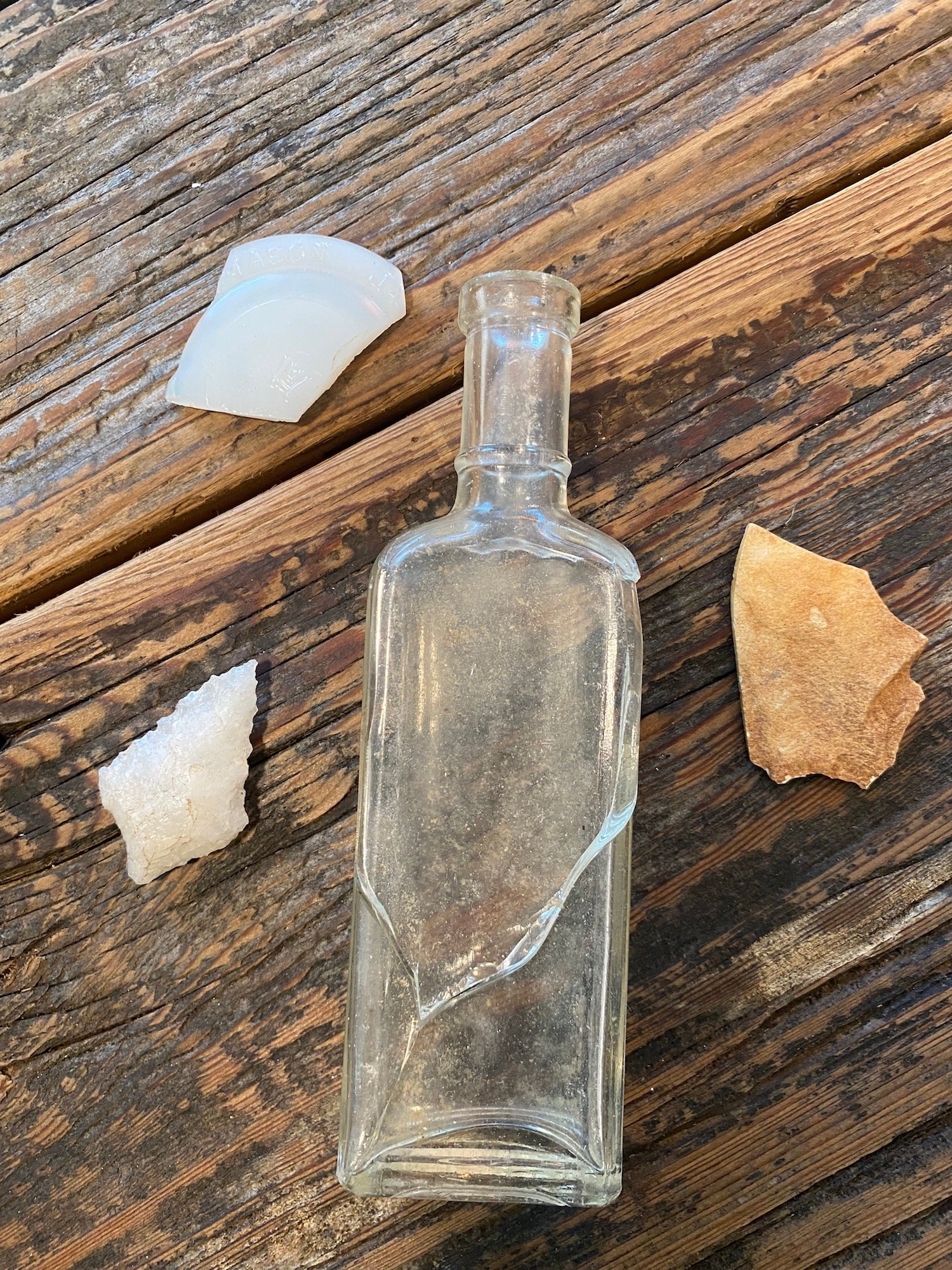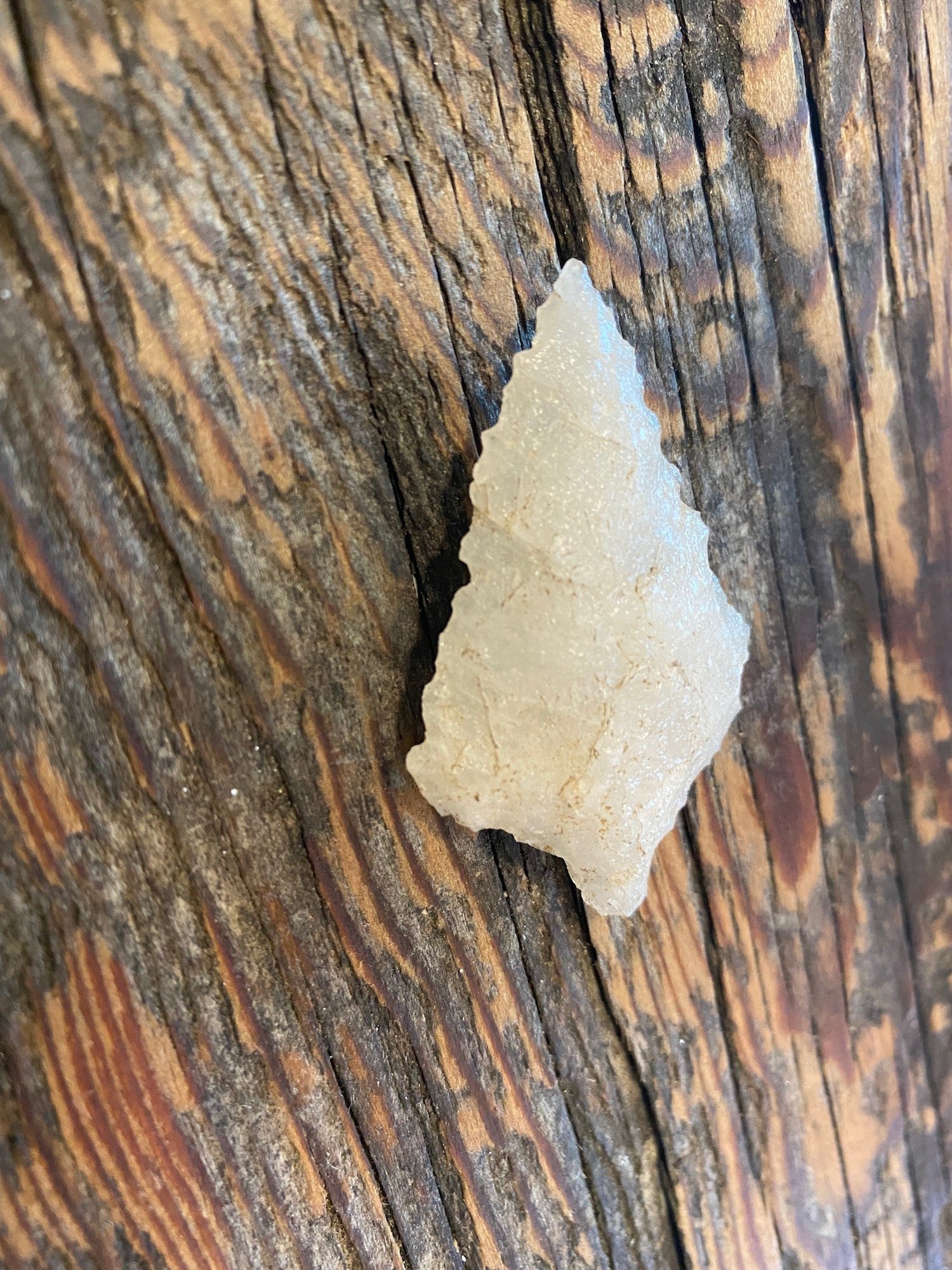Digging into Flat Rock's History
/Luke Hunter
In 2020, Luke Hunter was working as property manager at Susie Rindal’s home in Flat Rock. As he helped clear brush in the woods that surrounded her home, Luke noticed something about the contours of the land that evoked memories from his childhood days spent roaming the abandoned rice fields on his grandmother’s land near Charleston, SC.
What Luke saw was an embankment rising up from the ground in the middle of Susie’s property and just a few feet from Memminger Creek that bisects her lot. His mind flashed back to dikes built around the old rice fields in South Carolina. As he inspected the area further he realized he was also looking at ditches scattered around Susie’s property that looked like the irrigation ditches that crisscrossed the rice fields of his youth.
Given the historical connection between the South Carolina Lowcountry and Flat Rock, Luke surmised that the similarities of the landscape features might be more than just coincidence. Did the people who built the rice fields in the Lowcountry end up in Flat Rock building similar structures and digging the same kind of ditches?
Determined to find out if his intuition was correct, Luke called a friend in Charleston to recommend an expert on the construction of the old rice fields and was referred to married Lowcountry archaeologists Andrew Agha and Nicole Isenbarger. Luke reached out to the couple to ask if they’d be willing to make the trek to Flat Rock to take a look.
NIcole and Andrew working in Memminger Creek.
Skeptical, but willing to investigate, Andrew and Nicole arrived in December 2020 to walk the property with Luke. It didn’t take long for Luke to get his answer. Within 20 minutes Andrew concurred with Luke’s assessment and identified the embankment as manmade and most likely built with the construction methods employed by West African slaves and found throughout the Lowcountry rice plantations. Andrew was surprised. “It looked like the Lowcountry way up in the mountains just past the continental divide,” he recalls.
A Theory Evolves
Further inspection showed that the line of the embankment pointed in the direction of Memminger Creek where it flows across solid bedrock - a natural crossing point for early settlers trying to ford the stream with their horses, livestock, and wagons. Running parallel to the embankment was a second smaller and less conspicuous rise in the ground that could have been a companion embankment long since worn down by the flooding of the nearby creek. That second embankment pointed towards another section of the creek where the bank was reinforced with large cut granite stones stacked to create a retaining wall.
A sketch showing the orientation of the embankment to Memminger Creek and probable bridge crossing.
The pieces of the puzzle were starting to fall into place and paint a picture of what Luke and the archaeologists were examining - they were looking at supporting structures for a long forgotten bridge that crossed Memminger Creek. Given its location, it seemed quite possible that the bridge was a crossing that the Charles Baring family used in the early 19th century to travel by carriage from their Mountain Lodge home to the original chapel for St. John’s in the Wilderness Episcopal Church. The bridge may have also provided access for enslaved Africans and workers to get into the Memminger Creek floodplain for agricultural and other work.
Andrew and Luke theorize that the embankments would have been built to raise the bridge above the occasional flood waters and provide a more permanent crossing point over Memminger Creek. It was probably not the first bridge built in that location, but rather an attempt to create a structure that could withstand the challenges of flood waters that had swept away earlier bridges.
Now, nearly two hundred years later, the wooden bridge is long gone and forgotten by history, but the embankment has survived the ravages of time and weather. “It’s just like the embankments in the Lowcountry and it’s a testament to the skill of the builders,” says Andrew. “Those guys knew what they were doing.” Andrew estimates the wooden bridge supported by the embankments may have been as much as 50 feet wide.
Large cut-nail unearthed at the site of the excavation.
Adding to the mystery that continues to unfold is the discovery of both large cut-nails commonly in use in the early 1800s and much smaller nails of similar construction. The large nails would have been used to hold large planks or hewn timber in place on the bridge. The purpose of the smaller nails is unknown currently. One theory is that the bridge may have been covered and the smaller nails used to secure shingles to the roof.
All told, what is currently known about the quality of the construction and the size of the bridge indicates that it might have been a rather grand edifice for its day. Early maps, however, are silent on the matter of both the bridge and the road that led to the crossing. “A lot of old roads in Flat Rock were not mapped,” says Luke “And they also weren’t necessarily public. We hope this kind of research will locate more of them on the map and draw a different picture of Flat Rock than we are used to seeing.”
Ultimately, it is possible that the bridge may have fallen into disrepair after Baring died in 1865 and newer roads and bridges may have rendered its purpose obsolete. With time, the wooden structure would have quietly collapsed into the creek and out of the memories of subsequent generations.
Two years after their initial visit to Flat Rock, Andrew and Nicole are now Co-Directors of a new enterprise called Flat Rock Archaeology. At present they are in the midst of a nine-day dig to test their theories about the bridge and uncover the history buried beneath nearly two centuries of time and soil.
Andrew has been an historical archaeologist since 1997 and has done extensive work in the rice fields to examine where enslaved West Africans worked. His research works to understand the technologies used to build the dykes and irrigation systems that supported building 240,000 acres of rice fields in the South Carolina Lowcountry. Nicole has been an historical archaeologist in South Carolina and Georgia since 1998. Her research focuses on the internal economies of enslaved Africans, ceramic industries, colonial and Antebellum foodways, material culture, and West African spirituality and worldview.
Andrew excavates “Trench 1” which cuts into the side of the embankment leading to Memminger Creek. Josh Chaplin and Eleanor Flowers sift through the excavated soil
They are calling their current project the “Memminger Creek Crossing Archaeological Excavation.” Their earlier and preliminary investigations in the area produced documentable historic and prehistoric artifacts such that the site is now registered with North Carolina’s State Historic Preservation Office (SHPO) and Office of State Archaeology (OSA). The process could eventually lead to historic designation according to Andrew. “The story of this bridge, the historic context with Charles Baring, the relationship to the church and Buncombe Turnpike that ran nearby - all that ties together to boost the site’s eligibility for historic designation.”
The process has also engendered the interest of Historic Flat Rock, Inc which is providing funding for further research. “Our focus in this and potential future archaeological sites will be on labor and transportation,” explains Luke who currently serves as 1st Vice President of HRF, Inc. “This being an old bridge, probably built with slave labor, it covers both of those categories.”
For both Andrew and Luke, an important aspect of their research is to tell the story of a people largely absent from the written history of Flat Rock. Most of what is known about the earliest days of Flat Rock’s European settlements centers on the large mansions and the wealthy families who lived in those grand homes. Andrew wants to broaden that historical narrative. “We are really interested in the laborers, the women, the children, the enslaved people, servants, the porters, the minors, the quarrymen, the people who built this bridge complex we are working on today.” He stops for a moment to throw another shovel full of dirt into the sifting tray and then adds, “We want to bring their stories to light and help reveal the contributions of everyone who was part of the creation of Flat Rock.”
Luke Hunter sees the project as an opportunity for Flat Rock to rediscover and celebrate the laborers and enslaved people who were instrumental in creating the village where he grew up. “I’d like to find the connection to their story. They were really skilled. really smart people. If we can find more of their story - where they lived and how they were treated - I feel like we will be filling in a hole in our history.”
Josh Chaplin, Associate with Flat Rock Archaeology and and Ann Weeks, volunteer.
So far, the excavation of the embankment has revealed, in addition to the many nails unearthed, several layers of soil, clay, and gravel consistent with the theory that the embankment was constructed with the same techniques employed by the West African slaves who engineered the dikes in the Lowcountry. It is unlikely that the embankment itself will produce what the layman would consider dramatic finds but, as Andrew points out, the artifacts uncovered, no matter how mundane they may seem, will say a great deal about the lives of the people that used them. “People only wrote down what they wanted to write down,” he explains. “But the trash stays forever and it tells a whole lot about the lives of the people who lived here.”
As part of this process, Historic Flat Rock, Inc. has invited its members to volunteer as assistants during this initial dig. Ann Weeks signed up immediately. “I’ve loved this area since I was a little girl. I almost cried when I got this opportunity to do something for a place we love and where the history is so important.” Fellow volunteer, Eleanor Flowers, has deep family roots in the area, and uncovering the history of Flat Rock is personal for her. “I think doing something like this helps us find out more about our past. About my family’s past. Every shovel-full you can find a whole new treasure.”
Once the excavations are done, Andrew and Nicole will process the artifacts and do an in-depth analysis and present an interpretive report to HFR, Inc. “We are hoping that this study will lead to several more like it, “ says Andrew. What we really hope is to create a new archaeological context for Flat Rock.”
In addition to the study of unearthed artifacts, soil samples will be tested to reveal clues about what agricultural crops the earliest residents of Flat Rock were growing to help them subsist in the mountain. Flat Rock Archaeology associate, Josh Chaplin, will also provide expertise in digital archaeological technologies that include drone flyovers to provide detailed topographical maps as well as computer-generated 3-D models of their discoveries to create a detailed digital record of what is uncovered.
Andrew and Nicole are hopeful that this initial study will serve as the launch platform for additional studies in Flat Rock. When Historic Flat Rock, Inc. holds its Homecoming and annual meeting on August 6 and 7 the program for this year’s meeting will be "What the Ground Says: Archaeology and Flat Rock's Untold Story.”
Father/Daughter Volunteers Lee and Alice Grounsell
Indeed, the work done by researchers like Nicole, Andrew, and Josh will uncover the stories of those who were unable to create written records of their experiences in the earliest days of Flat Rock’s history. Archaeology, as Andrew and Nicole explain, “will both verify and dispel folklore, oral traditions, and usually discovers much more detailed and factual information.”
Ultimately, when asked what the ground says, Andrew replies with a smile, “It says a lot.”
Learn more about Flat Rock Archaeology here.
Additional Finds Recovered from Memminger Creek










